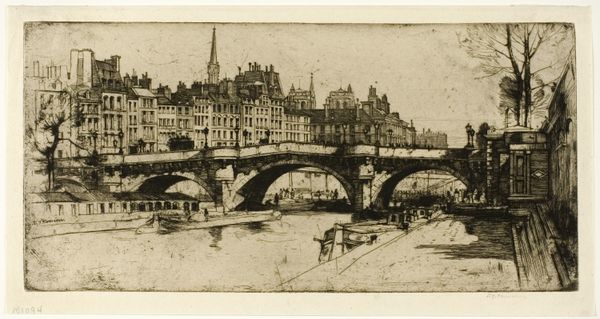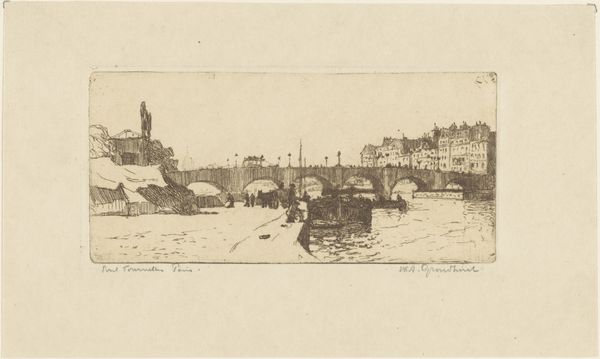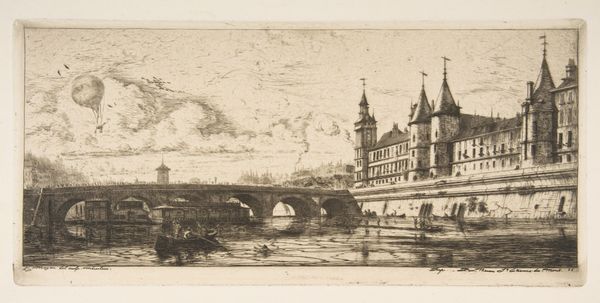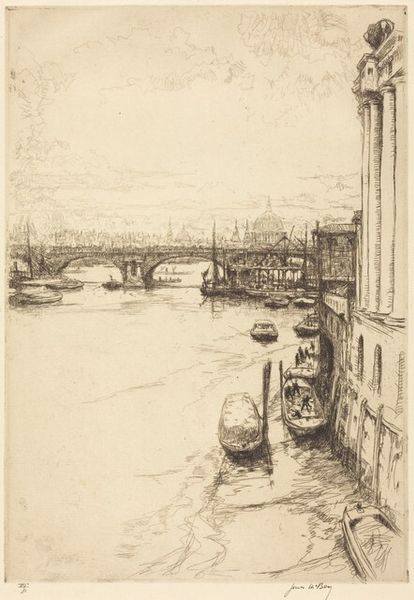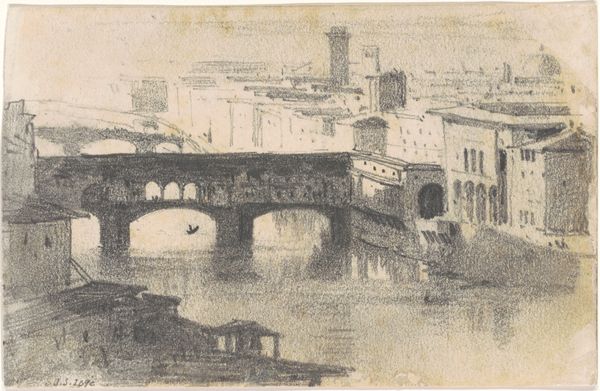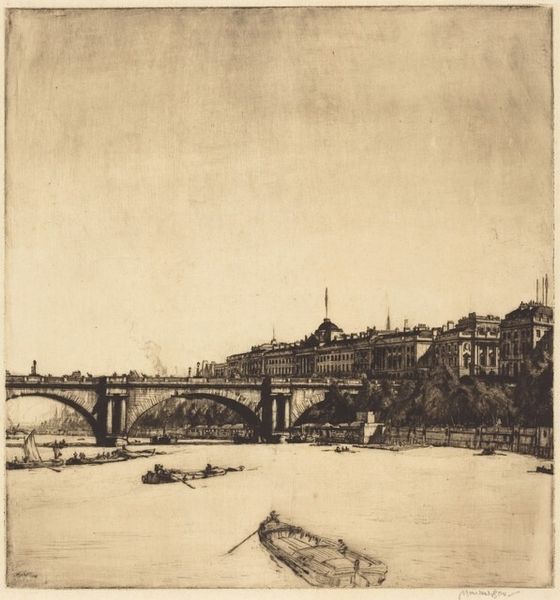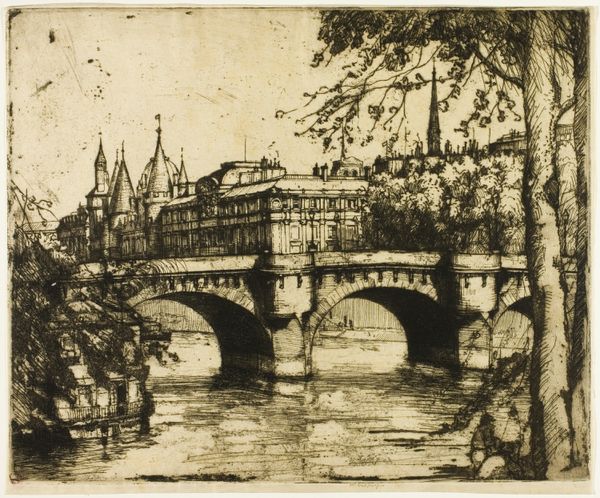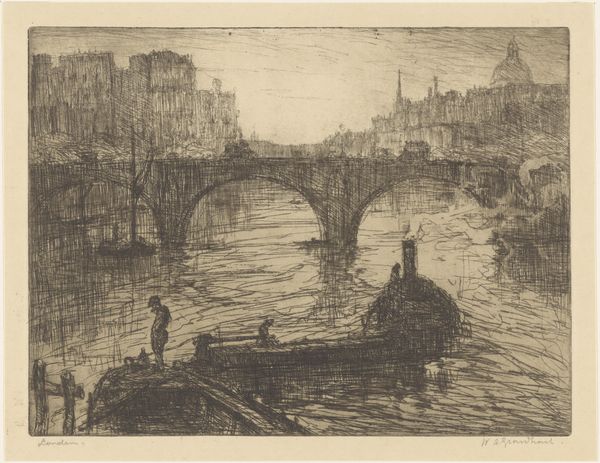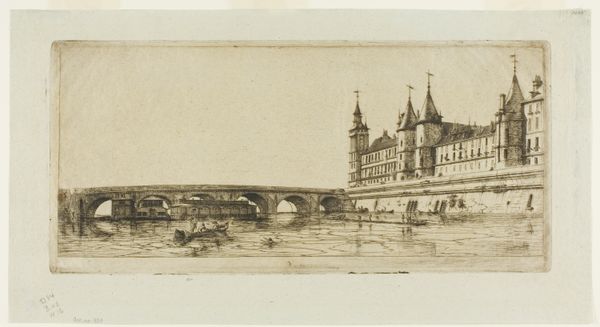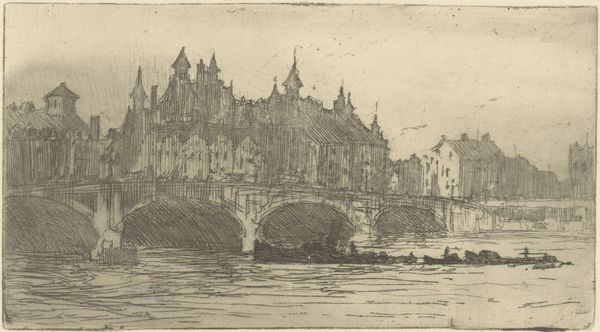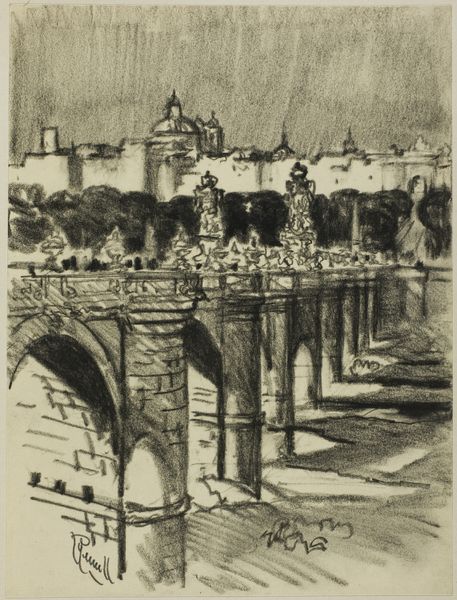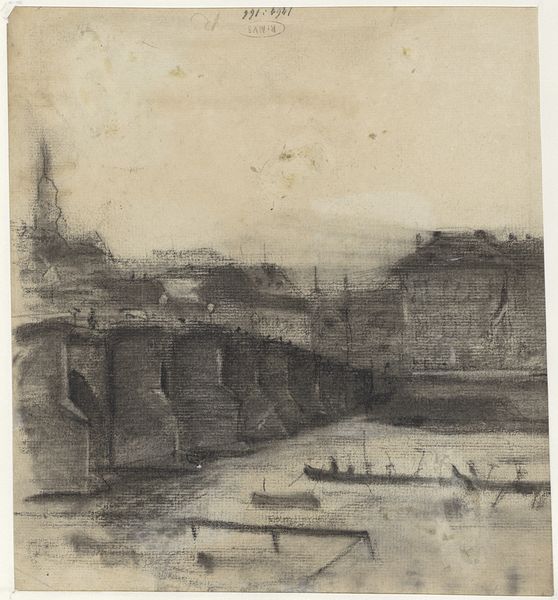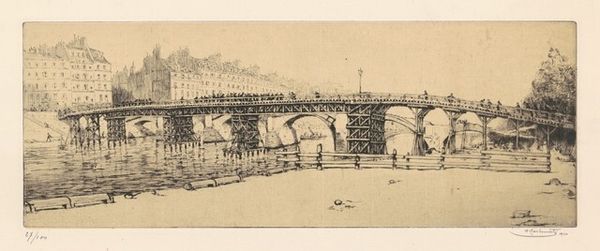
Dimensions: 202 × 275 mm (image); 221 × 278 mm (sheet)
Copyright: Public Domain
Curator: The wisps of hazy, atmospheric beauty are captured here in Joseph Pennell’s etching and drypoint work, titled "Waterloo Bridge and Somerset House," created around 1905. It's currently held at the Art Institute of Chicago. Editor: It strikes me as incredibly serene, almost melancholy. The muted tones and soft lines create a dreamlike impression of the bustling city. You can almost feel the Thames mist clinging to the air. Curator: Pennell was fascinated by industrial subjects and cityscapes, yet, also influenced by Impressionism, bringing attention to modernity and labour during his lifetime, but subtly hinting at their complex relationship to societal changes. His composition intentionally uses the bridge, a feat of engineering at the time, against the traditional architectural design, showing the older values against the modern landscape. It gives London a distinct character. Editor: Yes, and what interests me from a materialist perspective is Pennell's conscious choice of etching and drypoint. These are both intricate and laborious processes which emphasizes both his labour and his commitment to the materiality of urban existence as experienced and built on the streets. Also how it mirrors, almost, the gritty textures of London's own architecture. It's not about grand statements. It’s in fact about rendering what could be overlooked as mundane beautiful. The act of printmaking allows it to reach many people rather than be gate-kept into high art culture only. Curator: It's about giving dignity and presence to that landscape and acknowledging the labor behind the spectacle, too, wouldn't you agree? Perhaps, the class disparity. He doesn’t idealize a privileged view, and this print gives a snapshot into how social boundaries were constantly shifted through economic exchange, architectural growth, and class politics. Editor: Precisely! This is not just aesthetics, but labor represented materially through ink on paper that mirrors the processes he is highlighting, emphasizing accessibility, labor and social observation. It's fascinating how the technique mirrors the social fabric of the city at the time. Curator: Pennell captured a unique moment in London's evolution, inviting viewers to witness the dynamic energy of industrial progress alongside enduring human concerns, prompting us to re-evaluate our relationship with labour, materiality and social narratives. Editor: Yes, from the craftsmanship apparent in the etching's lines to the city scene, there's much to examine! Thanks.
Comments
No comments
Be the first to comment and join the conversation on the ultimate creative platform.

